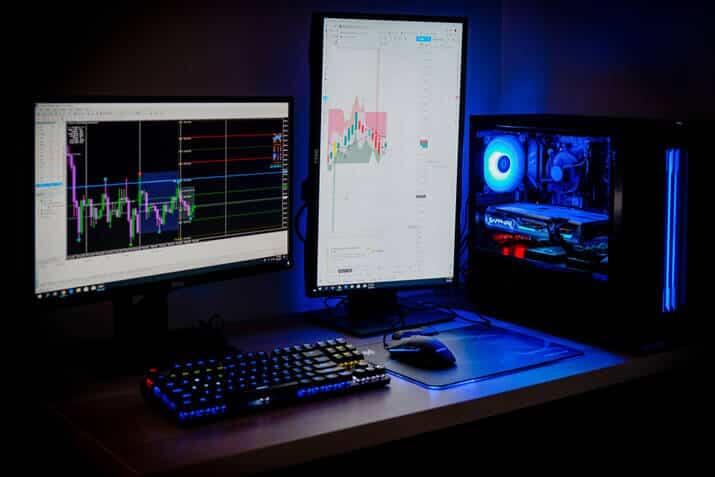
Fundamental Active Trading Strategy Guide for Beginners
Key Takeaways:
- Active trading strategy guide involves short-term buying and selling to profit from market movements, with strategy guides available for beginners.
- Day trading is popular among short-term traders, allowing them to buy and sell within a single day.
- Swing traders focus on capturing profits during price volatility, emphasizing trend analysis and support/resistance levels.
- Scalpers exploit small price differences in less volatile markets, requiring rapid decision-making and attention to resistance levels.
Have you ever thought about what is the fundamental active trading strategy guide like? What does it actually mean, especially if you’re a true beginner in this volatile industry?
First of al, active trading involves the short-term buying and selling of securities to capitalize on market movements. There are many trading strategy guides available to help individuals start trading in this manner.
However, not all of them are equally good. Let’s focus on the best guides that incorporate meaningful aspects such as technical analysis.
This approach is distinct from long-term investment strategies, such as buy-and-hold, which focus on long-term price movements. Active traders aim to profit from short-term market trends, rather than following the buy-and-hold strategy.
This strategy suggests disregarding short-term changes and concentrating on long-term price movements.
Why should you understand and integrate this strategy?
Understanding and integrating an active trading strategy, such as technical analysis, requires knowledge of various methods. When you start actively trading, you can explore various active trading strategies such as technical analysis.
This will help you find the strategy that aligns with your trading style. So, let’s begin with the day trading strategy, shall we?
Day trading – explained by a professional trader
Day trading is the most recognized form of active trading and is particularly popular among short-term traders.
Day trading is when you buy and sell securities in one day, closing all positions before the market closes. Day trading is a crucial aspect when discussing trading strategy guides for short-term traders.
Experienced traders use this strategy to make money from short-term price changes.
What have the electronic trading advancements made?
Nonetheless, electronic trading advancements have made day trading accessible to beginners, allowing them to participate actively in the market.
As a day trader, you control your trading account and quickly decide when to open and close trades during the day.
This style of trading offers the flexibility to work from various locations, including an office, home, or even on the go, thanks to mobile technology, making it a suitable option for those seeking to become short-term traders.
What are day trading advantages and disadvantages?
Day trading offers several advantages that make it an appealing choice for many traders. Firstly, it demands a high level of attention and a dynamic approach, which can be advantageous in quickly responding to market developments.
Day traders are often well-equipped to navigate the fast-paced nature of markets, helping them stay resilient in the face of sudden market fluctuations.
However, it’s important to consider the downsides of day trading as well. One significant drawback is the potential for higher commission costs, as day traders tend to execute a large number of trades within a single day, which can accumulate fees.
Also, while day trading allows for short-term profit opportunities, these gains can be fleeting, making it challenging to sustain consistent profitability over the long term.
Furthermore, day traders often operate with limited funds and resources, which can restrict their ability to weather adverse market conditions and diversify their investments effectively.
What does this trading style offer?
Day trading offers benefits such as heightened attention and adaptability, enabling traders to respond swiftly to market movements.
However, it also presents challenges, including the potential for elevated commission costs, the transient nature of profits, and constraints related to available capital and resources. Prospective day traders should carefully weigh these factors to determine if day trading aligns with their financial goals and risk tolerance.

Swing Trading – explanation of this style
Swing trading is employed when a trend breaks, aiming to capture profits during periods of price volatility as a new trend tries to establish itself.
Term traders typically hold positions for longer than a day. They rely on technical and fundamental analysis to inform their trading decisions.
Day traders focus on quick price changes in one day, while term traders, like swing traders, have a different strategy.
What aren’t swing traders primarily looking for?
Swing traders, for example, are not primarily looking for the quick highs of a price move. Instead, they search for markets that are clearly moving in one direction.
They aim to make money from these trends over a longer period of time. This involves analyzing price action and identifying strong levels of support and resistance to make informed trading decisions.
Swing traders have risks when markets are range-bound or move sideways, which can make their strategies less effective.
To do well in swing trading, traders need to find a balance between being patient and paying attention. They hold positions for a shorter time than in position trading, but longer than in day trading. It’s important to navigate the market’s price movements and trends effectively.

Scalping
Scalping is one of the fastest strategies in active trading. It involves exploiting small price gaps created by order flows and bid-ask spreads. Scalpers are traders who focus on making profits from small price differences.
They typically enter and exit trading positions rapidly, buying at the bid price and selling at the asking price. This strategy is particularly suitable for traders who prefer less volatile markets, as it allows them to repeatedly exploit the same small price movements.
For scalping to be effective, traders need highly liquid markets that enable them to execute more trades, each with a small profit margin.
They pay attention to resistance levels
Scalpers often pay close attention to resistance levels and strong trends in the market, looking for opportunities to capitalize on these patterns with their rapid trading style.
Before venturing into live trading, many scalpers start by practicing their strategy on a demo account. This allows them to refine their skills and gain experience without risking real capital.
Success in scalping demands dedication and a willingness to spend considerable time monitoring the markets for favorable conditions to execute their quick, precise trades.

Position trading is sometimes compared to buy-and-hold. However, when done by an experienced trader, it can also be considered a form of active trading.
Position traders use long-term charts in conjunction with other methods to gauge the market’s trend direction.
This strategy holds trades for a long time, from a few days to weeks or more, based on the trend. Position traders look for patterns of successive higher highs or lower lows to identify a trend.
They join a trend after it starts and leave when it ends, without making predictions about exact prices. High market volatility can make trend trading more challenging, often leading to reduced positions during these periods.
Selecting the Right Strategy
Selecting the right active trading strategy is a crucial decision that depends on various factors, including your risk tolerance, time availability, and market knowledge.
There are various trading strategies, such as term trades, day trading, swing trading, scalping, and position trading. Each strategy has its own unique aspects and requires specific skills and approaches.
When considering the implementation of your chosen strategy, it’s important to note that active trading, often practiced by professionals, can be challenging due to the costs associated with high-frequency trading. Timing your entry and exit points is crucial for successful active trading, regardless of your chosen strategy.
Various trading strategies available for your goals
Despite the challenges, there are various trading strategies that can align with your goals and lifestyle.
With the right resources, dedication, and the ability to skillfully enter and exit positions, active trading is not beyond the reach of individual traders who are willing to put in the effort and learn the necessary skills.
What are the advantages of this active trading strategy guide?
When it comes to Fundamental Active Tradinf Strategy guide, it’s crucial to know that these guides offer traders the advantage of actively monitoring markets. Also, they’re making informed decisions to capitalize on short-term price movements.
Flexibility is another key benefit, allowing traders to adapt their strategies to changing market conditions and align them with their risk tolerance, enhancing their ability to manage risk and seize opportunities.
In summary, these guides provide traders with the tools to navigate dynamic markets and potentially achieve profitable outcomes.
Bottom Line
Choosing the right active trading strategy is essential, considering factors like risk tolerance and time availability. Different strategies, from day trading to swing trading, cater to varying preferences and require specific skills.

Related: Turtle Trading System – What is it?




